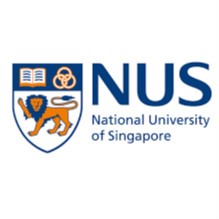1) Development of stop-flow micro-tubing (SFMT) reactors
Although continuous-flow reactors are effective for industrial processes, there are limitations when they are used in reaction discovery or optimization, which involves screening of reaction parameters (e.g. reagents, catalysts, solvents, etc). For example, a typical continuous-flow system usually does not allow for more than one reaction to be investigated at a time, and the residence time cannot be too long due to the restriction of micro-tubing volume. efficient and effective platform for gas/liquid reaction screening. Instead of flowing the reaction mixture continuously, the SFMT platform allows for the flow to be paused by shutting off two valves at each end of the micro-tubing. This sealed micro-tubing is disconnected at high pressure and the reaction is allowed to proceed till its desired reaction time. A new micro-tubing can then be attached to the system to explore a different set of reaction parameters. The SFMT addresses may limitations in conventioal batch reactors and continuous flow reactors, and has proven to be efficient for the screening of gas/liquid and light-mediated reactions.

2) Fine chemical synthesis using natural gas feedstocks via photocatalysis
Feedstocks derived from natural gas such as carbon dioxide, acetylene, ethylene and ethane which are inexpensive, non-toxic and highly available are becoming increasingly attractive as highly affordable starting materials in chemical synthesis. However, research into their potential application for the development of fine chemicals remains challenging and is constrained by the use of complex laboratory apparatus, especially for processes involving high pressure and phototransformations. The SFMT reactor is particularly suitable to evaluate chemical reactions involving gases and those which are catalysed by light. This is because of its high gas/liquid surface-to-volume ratio associated with the micro-tubing reactors and its increased light penetration properties.
Since 2017, our group has developed several new fundamental reactions that can directly convert inexpensive gaseous feedstocks into value-added chemicals in the presence of visible light using the SFMT or continuous flow reactors.(i) Vinylation of aryl halogen compounds using acetylene gas; (ii) Visible light driven hydrocarboxylation and carbocarboxylation of alkynes with carbon dioxide to synthesise various pharmaceutically important compounds such as coumarins, quinolones and hydroxybutenolides; (iii) A photo-mediated divergent ethylene difunctionalisation; (iv) A visible light promoted metal-free difunctionalisation of alkenes using carbon dioxide and readily available Si-H and C(sp3)-H bonds as feedstocks; and (v) Utlization of ethane as the ethylating reagent to react with electron-deficient alkenes by merging a photoredox catalyst and HCl as the hydrogen atom transfer catalyst.

3) Visible-light promoted C-H and Si-H functionalization
Direct carbon-hydrogen (C-H) bond transformations, or the replacement of “H” in C–H bonds with other atoms or substituents, is one of the most coveted ways to create new and useful molecules. However, while the C-H bond can be found in most organic molecules, it is considered inactive and therefore difficult to functionalise. Although direct C-H bond transformations have attracted continuous interest since the early 1970s, the majority of the research work has focused on the activation of the C(sp2)-H bonds to develop new ways of making chemical compounds. There are limited routes associated with the catalytic activation of C(sp3)-H bonds. My research group found that a chemical dye, neutral eosin Y, when activated under visible light can be used as a HAT photocatalyst to effectively catalyse a wide range of C-H bonds. HAT is one of the most fundamental chemical reactions (A-H + B → A + H-B) and is a key step in many chemical processes. A wide range of C-H and Si-H functionalization can be easily achieved by this cataysis mode. Due to the metal-free and inexpensive character, visible-light absorption, unlikely side-transformation, and effectiveness towards a wide substrate scope, neutral eosin Y photocatalysis represents the most convenient and green method for C-H and Si-H functionalization, which will likely find wide industrial application.

